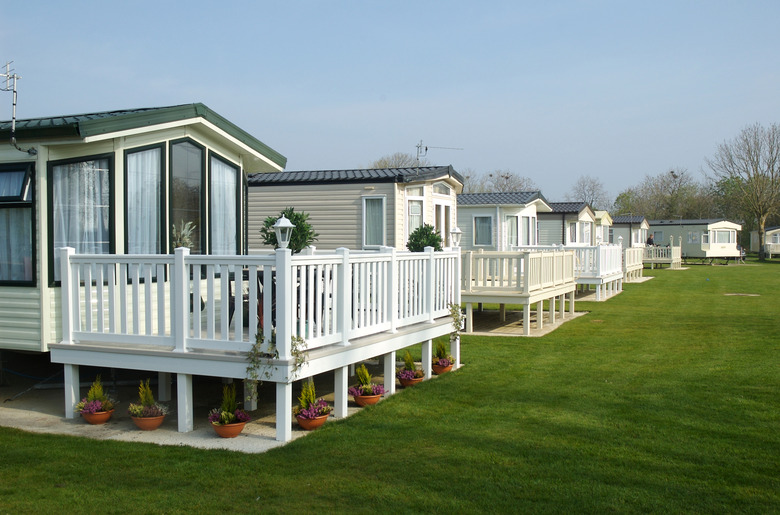How To Increase The Roof Pitch On My Mobile Home
If you own an older mobile home, it's likely that it has an aluminum roof and a fairly low pitch. These roof styles tend to become worn over time. While these roofs can be patched up as a temporary measure, to improve a mobile home's roof integrity, you can install a new roof with a higher pitch. Increasing a mobile home's roof pitch can give your mobile home a new lease on life.
What's the Roof Pitch of a Mobile Home?
What's the Roof Pitch of a Mobile Home?
The roof pitch of a mobile home is a measurement of the incline from the edge to the center of the roof. Mobile homes are initially manufactured in a factory, although not all have the same roof pitch. A higher roof pitch not only looks homier and more aesthetically appealing, but it also offers structural improvements to a mobile home.
Reasons For Changing Roof Pitch
Reasons For Changing Roof Pitch
Changing the roof design on a mobile home can be done for a variety of reasons. One is for aesthetics – a higher roof pitch can make a mobile home look more like a conventional house. An increased roof pitch also offers structural benefits to a manufactured home. It offers better support in heavy rain or snow, preventing potential leaks or water damage. A higher pitch can offer greater strength and longevity to a roof, and a higher pitched roof requires less maintenance. It can also benefit the energy efficiency of your mobile home.
Raising The Roof on a Mobile Home
Raising The Roof on a Mobile Home
If you do decide to increase the roof pitch on your mobile home, the first decision you need to make is whether to install a new roof over the original one or replace the roof entirely. Replacing the roof offers a fresh start from any damage or leaks in the old roof, but it's expensive and has to be done by a professional. A roof-over job doesn't fix issues with the underlying roof but can be done on a tighter budget and as a DIY task.
Increasing the roof pitch on a mobile home may require planning permission, so be sure to check with your local authorities before starting. You also need to consider the weight of the new roof. If you're in any doubt, consult with a structural engineer who'll be able to ensure the safety of your new roof pitch.
There are three popular options for roof-over materials — aluminum, asphalt shingles and rubber membranes — and there are pros and cons to each of these materials. An aluminum roof over is fairly easy to install and offers great benefits in terms of structural integrity, but it's a more expensive option. An asphalt shingle roof-over is cheap and offers a traditional, appealing look to a mobile home, but it can have issues in terms of leaking and excess weight. A rubber (sometimes called TPO) membrane roof-over is fairly cheap and highly energy efficient, but it may offer a shorter lifespan for the roof. You can choose the roof over material based on your budget and other considerations, such as the general climate.
How To Increase a Mobile Home’s Roof Pitch
How To Increase a Mobile Home's Roof Pitch
The first step to a successful roof-over installation is checking and repairing any damage to the original roof. Once you've installed the new roof, repairing damage to the lower roof will be almost impossible, so it needs to be in excellent shape before you start. Installing a new roof pitch should only take a day, but check the weather before starting as it's nearly impossible to do in the rain.
It's recommended to purchase a roof-over kit when trying to increase your mobile home's roof pitch. This will come with all the necessary materials, including framing or trusses. Each kit will have specific instructions according to building materials, mobile home size and desired angle of roof pitch.
Generally, you'll need to build a frame for your new roof pitch and attach it to your mobile home's roof. Then, add trusses and decking to the frame and to the roof of the mobile home. You can then apply the chosen roofing material to this roof deck. Make sure you extend any vent pipes through the new roof pitch and seal it with flashing.
